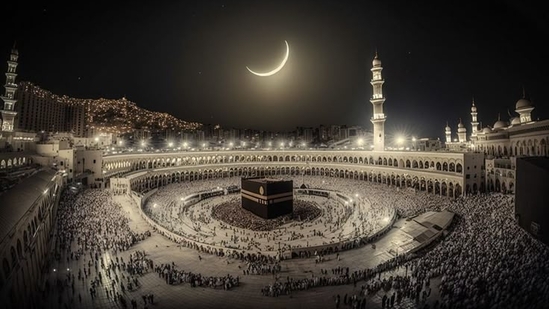The crescent moon marking the beginning of Dhul Hijjah 1446 AH has been sighted in Saudi Arabia, officially starting the last month of the Islamic lunar calendar on Wednesday, May 28, 2025. As a result, Eid-ul-Adha (also known as Bakrid, Eid al-Adha, or Eid-ul-Zuha) will be celebrated on Friday, June 6, 2025, while the Day of Arafat (Youmul Hajj) is set for Thursday, June 5, 2025.
The announcement came after successful moon sightings were confirmed in several countries including Oman, the UAE, Qatar, Kuwait, Jordan, and Iraq, alongside Saudi Arabia. Muslims around the world had been observing the skies on Tuesday, May 27 (29th of Dhul Qadah) to confirm the crescent sighting, which determines the start of the sacred month and the corresponding dates of Hajj and Eid.


Significance of Dhul Hijjah and Eid-ul-Adha
Dhul Hijjah is one of the holiest months in Islam. It is during this period that millions of Muslims undertake the Hajj pilgrimage to Mecca, one of the five pillars of Islam. Hajj begins on the 8th of Dhul Hijjah and reaches its climax on the 9th with the Day of Arafat, followed by Eid-ul-Adha on the 10th.
Eid-ul-Adha, also known as the Festival of Sacrifice, commemorates the profound act of obedience by Prophet Ibrahim (Abraham), who was willing to sacrifice his son in submission to God’s command. In remembrance of this, Muslims who can afford it perform the symbolic sacrifice of an animal such as a goat, sheep, or cow.
The meat from the sacrifice is divided into three parts:
- One-third for the family,
- One-third for relatives and friends,
- One-third for the poor and needy.


A Global Celebration of Faith
As the crescent moon was sighted, Muslims in regions including the United States, United Kingdom, Canada, France, and other parts of Europe also began preparations for the observance of Dhul Hijjah and Eid. The traditional practice of moon sighting—done either with the naked eye or aided by telescopes—remains an essential ritual that determines the dates of Islamic events worldwide.

While Eid will be celebrated on June 6 in countries following the Saudi sighting, others may celebrate it on different dates depending on their local moon sightings.
This sacred period is marked by heightened worship, charity, reflection, and spiritual renewal, as Muslims across the globe commemorate the values of sacrifice, obedience, and compassion.




